Tribeca 2020 Short Films: Critic’s Choice

Senior Film Critic Kurt Brokaw’s Top Shorts from the 19th Annual Tribeca Film Festival
Since spring of 2002, when downtown Manhattan was in the fragile beginnings of recovery from the attacks on the World Trade Center, the Tribeca Film Festival’s short subjects have been among the most anticipated films in the festival’s annual offerings. Tribeca was the first New York film festival to seriously highlight shorts. Sharon Badal, VP Filmmaker Relations and Shorts Programming, and her dedicated team of curators divide them into narrative, documentary and animation, and “silo” them thematically each year. This Tribeca commitment, year after year, has spurred other festivals—not just locally but nationally and globally—to follow suit.
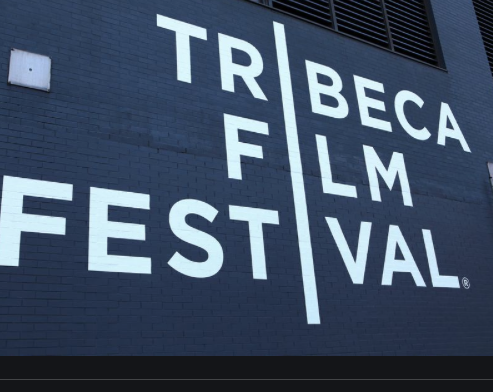 For much of the 20th century, shorts were studio properties. Moviegoers came to expect them as part of a matinee or evening out that would include a single or double feature, preceded by a newsreel, a coming attraction, and a “short subject”—usually a cartoon or a narrative specialty like a travelogue, a Pete Smith, a Three Stooges, or a 15-minute chapter in a continuing cliffhanger serial. Shorts became an essential part of a common expression: “Motion pictures are your best entertainment.”
For much of the 20th century, shorts were studio properties. Moviegoers came to expect them as part of a matinee or evening out that would include a single or double feature, preceded by a newsreel, a coming attraction, and a “short subject”—usually a cartoon or a narrative specialty like a travelogue, a Pete Smith, a Three Stooges, or a 15-minute chapter in a continuing cliffhanger serial. Shorts became an essential part of a common expression: “Motion pictures are your best entertainment.”
Today shorts are the calling cards of young filmmakers worldwide. At Tribeca each year, the four or five dozen chosen out of thousands of submissions receive multiple public screenings during the festival. The filmmakers travel to New York City—many for the first time—from all over the world. They’re introduced to sold-out audiences. They get a brief Q&A with Badal or one of her staffers. Some of these shorts get rave reviews, right along with top feature films, in The Independent’s columns. Some actually go on to win Oscars.
Shawn Christensen’s 19-minute Curfew transfixed Tribeca audiences in 2012 with its gritty, gutsy, good-hearted artistry. Then it migrated uptown—the first time a Tribeca short had received an encore showing in The New York Film Festival’s curated shorts in Lincoln Center. The Independent reviewed it not once but twice. Then it was nominated for an Oscar for Best Live Action Short. Then it won, and became the feature film Before I Disappear. And so it goes. Last year we reviewed the Oscar-winning Learning To Skateboard In a Warzone (If You’re A Girl) and The Neighbors’ Window at their first showings, correctly predicting Marshall Curry’s bittersweet tale would take home the Oscar for Live Action Short.
Many of the major feature length dramas and documentaries originally scheduled for this year’s Tribeca fest were not available for viewing at this time. But the press corp was able to see and evaluate nearly all 64 shorts (out of 6,100 submissions from 20 countries). Here are six of this viewer’s favorites:
John Bronco; Jake Szymanski; USA, Iceland; 2019; 36 minutes
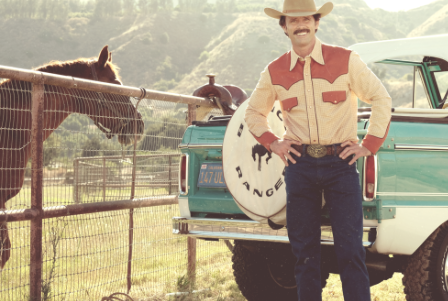
In 1962 your critic was laboring away as a junior copywriter on the Ford account at J. Walter Thompson, the giant New York ad agency. Another up-and-coming Ford writer at the same time was the late Fred Gwynne, years away from becoming his forever legacy, Herman Munster. Fred’s ideas weren’t well received, so he invented a second persona, a stay-at-home maverick who sent in far pushier work. The creative managers liked his pal’s ideas better than Fred’s. “Why can’t this guy show his face?”they’d ask. Fred kept inventing loopy excuses about his alter ego. For months it worked.
Jake Szymanski’s documentary-style tale of how an itinerant race car driver named John Bronco became Ford’s most popular spokesman for its legendary line of SUVs from 1965-1996, is painstakingly convincing. The commercials shown match the style, color grain and folksy simplicity of what Thompson was turning out in the 60s. A Ford Motor Company archivist in Dearborn shows us corridors of files holding Bronco’s promotions, boots, hats, ad proofs, commercials.
The credibility keeps piling up. Kareem Abdul-Jabbar tells us in all seriousness that the former factory worker and rodeo rider was “a Renaissance man” who made more commercials than he did. Ford sales climb everywhere, even in Iceland where people seem to revere him almost as much as Björk. John starts writing and directing his own “John Bronco Tough” commercials and jingles, including a single (“Mama named me Bronco”) that rockets to the top of the Billboard charts. Carson, Cavett and Laugh-In welcome the fancied-up singing cowboy with the dirty boots.
It goes on. Bo Derek admits she was helplessly attracted to the married pitchman. Suddenly the country boy sheds his wife and becomes a city slicker celeb with his own cologne, breakfast cereal and video game. But when Bronco’s face is injured by a football thrown by Heisman Trophy Winner Doug Flutie, he’s thrown into a tailspin that results in bad business decisions—including making a surreal $475,000 Bronco 2 commercial with his own money that doesn’t show the vehicle and Ford won’t air. Then Bo ashamedly reveals she was really in love with Flutie and wanted him to get rid of John. The devastated Bronco disappears to Iceland. There is much, much more to be revealed.
Your critic, after sitting dumbstruck through this immensely entertaining 36-minute opus, immediately began researching Ford commercials, genuinely thinking he’d somehow missed a half century piece of Ford history. Uh, uh. John Bronco is a deepfake doc of the first order, and director Szymanski, along with writer Marc Gilbar and a crackerjack cast (led by a brilliant Walton Goggins as the intrepid huckster) has slyly pulled off the Fake News short of 2020. Fred Gwynne would have got it right away, and he’d have loved it as much, maybe more.
Akashinga (The Brave Ones); Maria Wilhelm; USA; 2019; 13 minutes

Poachers stalk and slay elephants for their precious ivory throughout the Lower Zambari Valley in Zimbabwe, every night. The one armed defense that can stop them are 240 African women. They’re uniformed young Rangers, “one family of sisters,” tightly disciplined and totally dedicated, knowing desperate poachers won’t hesitate to kill them with the same cunning they use to find and murder elephants of all sizes and ages.
Wilheim’s riveting doc demonstrates the rigorous training they’re put through in the Akashinga Conservation Army. It has cinematic credentials of the highest order—aerial urgency, a pulsing music score, razor-sharp editing—and no wonder: It was executive produced by James Cameron. Maria Wilhelm, its director, is a former Time journalist and editor who’s president and COO of Cameron Companies. This is a National Geographic documentary product. You’d expect spark and sizzle that matches the faces of 25 native trainees who are learning self defense and law enforcement under Sgt. Petronella Chigumbura, a towering female fighting force who looks like she takes no prisoners. This doc delivers.
Thirteen minutes of being “hungry, cold, tired and wet” have rarely moved so fast in a nature film. Akashinga ends barely after it’s begun. But it’s a honed, no-fat summary of 12 months of hit-the-ground-running that ends on graduation day, with an army of women cheering themselves and their mission to protect the Zimbabwe elephant at all costs. Info at the International Anti-Poaching Foundation (IAPF.org)
Cru-Raw; David Oesch; Switzerland; 2019; 10 minutes
If you’re a student filmmaker, making a first film, you might despair of ever being able to compete in a shorts competition with James Cameron.

Put that notion aside. Big ideas that surprise and entertain are born everyday, everywhere. Consider writer/director Oesch, who created this delicious sliver of queasy tension in a Swiss kitchen while at film school at Zurich University of the Arts. His compact Bachelor’s degree film won the Student Visionary Award in Tribeca’s jury competition, and here’s his set-up…up to a point:
The dining room of an upscale Swiss restaurant is packed, and the pressure in the spotless, stainless steel kitchen is at fever pitch. A cuisine apprentice (Jeanne Werner) is working her best in a frenzied crew, slicing, dicing and helping ready impeccable dishes. She’s frazzled. The older owner and head chef (Malika Khatir ) dressed in ominously fashionable black from head to toe, saunters in and begins to inspect the dishes. She samples a sauce in a terrine with a finger. She is a terror. “If it’s not perfect, we throw it away,” she hisses. “You have 10 minutes to make me a better sauce.”
The pace quickens. The appetizers are falling behind. Mistakes are made, dishes fall. The young apprentice cuts herself—it’s not a serious cut, but she hurries out into a passageway to wrap her bleeding hand with cellophane. The owner follows her, lighting a cigarette. She tells the apprentice the restaurant has been her life for 20 years. And then she challenges the distressed newbie, “Show me what you can do.” (Both Ms. Werner, a Zurich U alum and screen actress, and Ms. Khatir, a stage actress who matches Gale Sondergaard’s evil eye in The Letter, are splendid.)
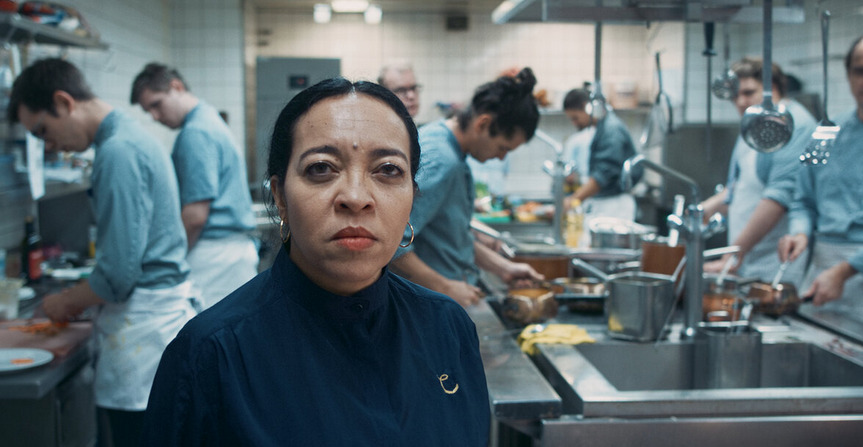
Thus begins a series of untoward happenings, the kind of shivery delights we keep going to movies for. Out of the corner of her eye, the apprentice notices one drop of her blood has fallen into a terrine of the newly prepared sauce. Oh my God. It’s whisked away by a server before she can stop him and it’s served to a gentleman at a table of the very rich. Your viewer wouldn’t dream of giving away what happens next, but it’s as unexpected as the final minutes of Marshall Curry’s Oscar-winning The Neighbors’ Window. And that was Curry’s first narrative short, too.
Crescendo!; Alex Mallis; USA; 2019; 10 minutes
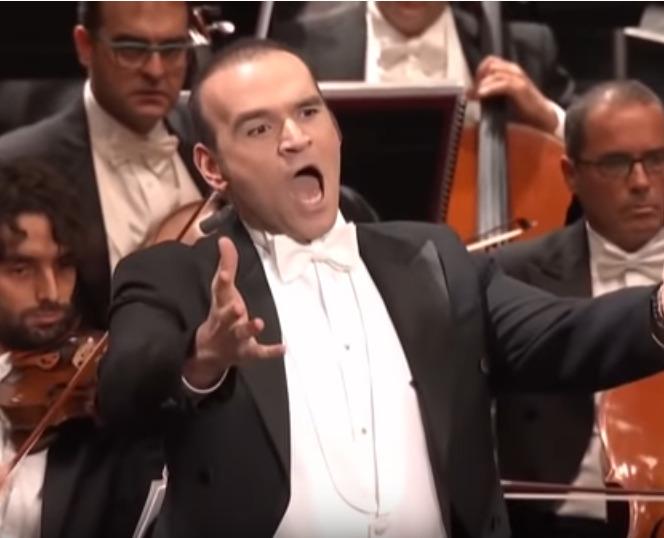
Michael Fabiano, one of the Metropolitan Opera’s stable of world class tenors, is a 34-year-old gay man with a no-longer-concealed past. Watching and listening to a gay professional talk about a closeted life is hardly a fresh subject for a doc short, but Alex Mallis knows exactly how to build it in a way that looks and feels new. Mallis’ abandons the customary technique of fashioning a life in chronological order, instead building a narrative that intercuts present with past, past with present in ways that pull you toward the subject with increasing interest.
Fabiano positions himself upfront, today, as constantly striving for the excellence he’s achieved in roles like Rodolfo in La Boheme and Alfredo in La traviata. Then we see him in Kodachrome snaps as “a massive nerd with a vibrato voice that people made fun of.” He tells us that until very recently in the contemporary opera world, “gay superstars did not exist.” And then, as a kid, how he suffered physical attacks by peers who jeered him “as Michael Fagiano.” And how, when he came out to a revered grandfather, the one he loved most in his family, the relief of receiving this relative’s complete acceptance was palpable. The mood swings of Mallis’ little movie are deliberate and calculated. We’re held, waiting for whatever the title Crescendo! might come to mean.
And when it happens, after we view Michael being congratulated for his honesty at a splendid Met reception, it’s a crescendo for the ages. We watch and hear him performing the final moments of “Nessun Dorma” from Puccini’s opera Turandot. It’s one of those pieces that makes your hair stand on end, as its sustained A note carries all the way up to the way up to the Family Circle seats and beyond. Fabiano nails it with the same majestic certainty that Luciano Pavarotti brought to the aria. A Pavarotti fan once wrote that “he hits that last note like it owes him money,” and you may agree Fabiano does the same thing.
The film’s epilogue—really a quick, happy footnote that salutes the beginning of Michael’s offstage adult life—is his marriage on October 28, 2018, to Bryan McCalister. It was the first same-sex wedding performed at the Met Opera.
The History Lessons: A Call to Shorts Filmmakers
If you’re debating a short subject to launch or expand your career, consider revisiting a documentable historical event. Before you exclaim how boring, think about this: Whether it’s a tiny footnote to history or an event well known globally. the concept is there. Half your work is done—often the most difficult half. Year after year, thousands and thousands of shorts submitted to Tribeca never make the cut, One reason surely is the core concept isn’t interesting enough. You’re ahead of the game if you pick a historical concept that’s intrinsically relevant. And if you execute that concept with style and excellence and surprise, you may be closer to having your work chosen. Here are two examples of history well told—the first a subject known to few, the second an event familiar to all, each told in a distinctly different format:
Liliu; Jeremiah Tauamiti; New Zealand; 2020; 17 minutes
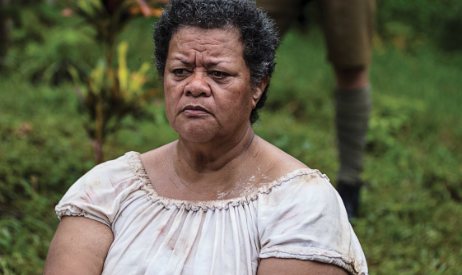
In Samoan, “liliu” means “to reveal.” Writer/director Tauamiti is a New Zealand filmmaker whose Samoan father gave him the title of High Chief. Tauamiti reaches back to 1920, when his family’s Polynesian islands came under the “protection” (read dominance) by armies and judges appointed by King George of Great Britain. Following WWI, these islands longed for independence. Liliu is the first film to dramatize Samoa’s subjugation by an oppressive government. What Tauamiti has fashioned is a fearless, ferocious prototype of how indigenous people worldwide, throughout history, have lost their independence to powerful rulers.
On the shaded veranda of a home in a tropical jungle clearing, an older white judge (Peter Hayden) is dispensing justice to natives charged with infractions of the law. His manner is haughty, precise and condescending. Nua (Ana Tuisila), the widow of a Mau chief, is brought before him, her hands tied, accompanied by Solo (Vito Vito), a meek native translator fluent in English. The widow, having been penalized once for tax evasion, is now charged with burying a relative on property seized by the government. The translator urges her to plead guilty.
Nua refuses and insists—speaking partly in Samoan and partly in English— it’s her land passed down to her by her ancestors, and that “our blood nourishes this soil, the soil we return to.” She’s shaken but controlled. “I don’t pay taxes to a king I don’t know, and don’t want to know.” The judge is shocked by what he regards as unconscionable insolence. He calls her “girl” and decries her as a savage. He warns her if she does not change her plea, she will not see her waiting grandchildren again. She shouts back that “my dead husband was my king!”
Ms. Tuisila as well as her two male co-stars are professional actors, and all three dig into their director’s volatile script with relish and acumen. Their confrontation escalates with a scalding fury. The translator stays silent as Noa is led away at gunpoint, though we’ll remember he tried earlier to intercede with the judge, telling him solemnly that “you’ve been given a necklace of authority, wear it responsibly or it will crumble away.” Samoa did not achieve independence until 1962.
Sixth of June; Henry Roosevelt; USA; 2020; 15 minutes
Say you’ve decided to make a short on the second World War. Massive subject, pick one aspect. Take the Sixth of June, 1944, D-Day, the battle of Normandy. Forget it—already done as two marquee-busting Fox war movies with endless casts in ’56 and ’62. How about a doc? We’ve watched all that footage—and anyway, how could any film match Robert Capa’s photographs of the beach assault where 450,000 Americans were killed, wounded or went missing. Think deeper—like, how is that day in history remembered today?
Suppose, Henry Roosevelt mused, you let the men who fought to take that beach, by sea and air, who are alive today, tell their stories? It’s a common filmic technique, how do you make it different? Well, each year 30,000 veterans, their families, historians, bagpipers and drummers, active duty members in uniform and tourists assemble in the tiny town of Sainte-Mere-Eglise. It was the first Norman village in France to be liberated by the US 82nd Airborne Division, along with tanks and troops from Utah Beach.
That’s it! The perfect doc location.
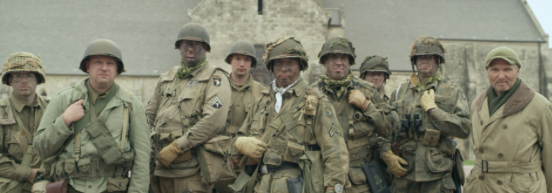
Many townspeople have lived their lives in the homes in which their parents sheltered them. One older resident proudly displays a childhood souvenir—a wing fragment of a C47 transport plane that air-dropped thousands of paratroopers. Walking tours are led by historians who show army volunteers the paths of combat that crisscross this unimaginable theater of war. We see burial grounds dotted by white crosses that stretch as far as the eye can see—the voices of living veterans describe German bullets hitting the sides of their boats before they jumped out onto a dark and terrible beach
“The danger,” says Susan Eisenhower, granddaughter of President Dwight Eisenhower, who was Supreme Commander of this Operation Overlord, “is that we don’t teach this history anymore.” “These commemorations are a symbol of reconciliation,” adds Helen Patton, granddaughter of Gen. George Patton, noting that “they reconnect the threads of memory that have broken, or frayed through the years.”
Americans forget their past, laments a colonel who was an original member of the 82nd Airborne Division. “Future generations need to know what can happen if the wrong kind of people get in power,” warns a captain from the Third Army. “I try to forget the bad memories, but there’s no way I possibly can,” admits another Third Army vet. Yet another views his returning to Normandy each year as “my age-reducing medicine.” They come on canes, on walkers, in wheelchairs, proudly wearing their World War II Veteran caps. People want their pictures taken with a living private from the 90th Infantry Division. “You go home feeling someone appreciated what you did.”
This concludes critic’s choices. Watch for Brokaw’s reviews of the 58th New York Film Festival, Sept. 25-Oct. 11 at Lincoln Center.
